Looking for a meter with a good temperature range, I found this one on Ebay: [20110618092852.jpg 20110618094302.jpg 20110618095154.jpg 20110618095200.jpg 20110619093701.jpg 20110619100016.jpg meter.jpg]
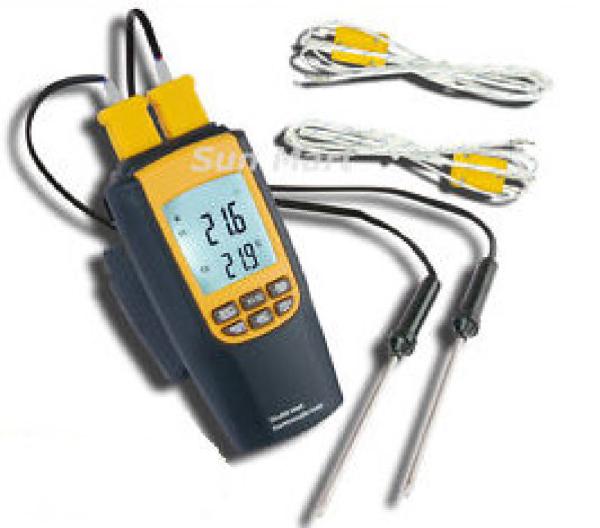 This is a meter with 2 channels and it comes with 4 probes. Full specifications are: Display: 4 digits LCD Display
Measuring Range:
K-Type: -200 ~ 1300 °C (-328 ~ 2372 °F)
J-Type: -200 ~ 1200 °C (-328 ~ 2192 °F)
Resolution:
0.1 °C / °F (-200 ~ 999.9 °C)
1 °C / °F (above 1000 °C)
Accuracy:
-200 °C ~ -100 °C / ± (0.2 % reading + 1 °C)
-100 °C ~ 1300 °C / ± (0.1 % reading + 0.7 °C)
-328 °F ~ -148 °F / ± (0.2 % reading + 2 °F)
-148 °F ~ 2372 °F / ± (0.1 % reading + 1.4 °F)
Response time: 1 second
Auto power off: about 20 minutes
Low Battery Indicator
Operating environment: 0 ~ 50 °C (32 ~ 122 °F), 0 ~ 80% R.H.
Storage environment: -20 ~ 60 °C (-4 ~ 140 °F), 0 ~ 80% R.H.
Power: 3 x 1.5 V AAA Batteries
Size: approx. 165 (L) x 64 (W) x 35 (D) mm
Weight: approx. 120 gWhen it got delivered the meter came complete with batteries, 4 K-type probes (2 wire and 2 pen type), manual, carry cord and 2 K-type connectors. The two connectors appear to be extra and allow to make extra sensors if you have K type wire. To see if the meter is useful for any serious temperature measurements, I ran a series of tests to see how the meter performs. I used my multimeter (which also has a K-type thermocouple interface) as a reference meter. The multimeter only has a wire interface. I ran a couple of different tests. The first was with boiling water. That should come close to 100 degrees. [20110618092852.jpg 20110618094302.jpg 20110618095154.jpg 20110618095200.jpg 20110619093701.jpg 20110619100016.jpg meter.jpg]
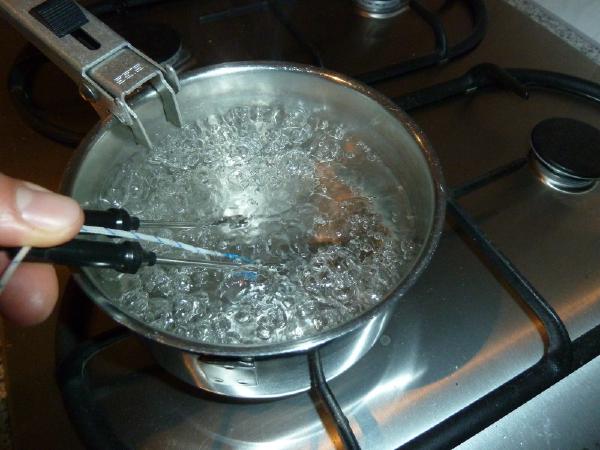 With the wire thermocouples results are: Channel 1: 98.2 °C
Channel 2: 98.7 °C
Reference: 99.6 °C Reversing the probes on the inputs of the meter: Channel 1: 98.0 °C
Channel 2: 98.5 °C
Reference: 99.5 °C With the pen thermocouples results are: Channel 1: 97.0 °C
Channel 2: 97.9 °C
Reference: 99.4 °C Reversing the probes on the inputs of the meter: Channel 1: 97.5 °C
Channel 2: 98.3 °C
Reference: 99.7 °C The next test was with the sensors in melting ice. [20110618092852.jpg 20110618094302.jpg 20110618095154.jpg 20110618095200.jpg 20110619093701.jpg 20110619100016.jpg meter.jpg]
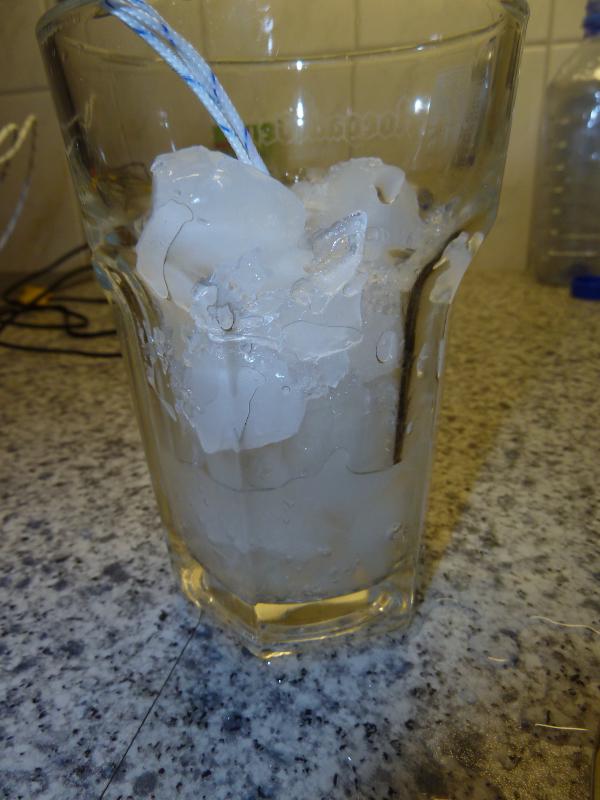 With the wire thermocouples results are: Channel 1: 1.0 °C
Channel 2: 0.8 °C
Reference: 3.1 °C Reversing the probes on the inputs of the meter: Channel 1: 0.7 °C
Channel 2: 0.6 °C
Reference: 3.4 °C With the pen thermocouples results are: Channel 1: 0.8 °C
Channel 2: 0.8 °C
Reference: 3.6 °C Reversing the probes on the inputs of the meter: Channel 1: 0.7 °C
Channel 2: 0.7 °C
Reference: 3.6 °C Next measurement was with the pen sensors in an open flame. This could indicate any difference in channel input on the meter. This test is difficult, because the position of the sensor in the flame greatly influences the temperature. [20110618092852.jpg 20110618094302.jpg 20110618095154.jpg 20110618095200.jpg 20110619093701.jpg 20110619100016.jpg meter.jpg]
 With both sensors as close to the same position as possible, these are the results with the pen thermocouple: Channel 1: 945.6 °C
Channel 2: 945.7 °C The next test was to heat the housing of the meters. A thermocouple sensor gives of a voltage based on the temperature at the sensor (warm junction). The other end of the sensor (at the meter) the wire changes from the metal type of the sensor (metal type depends on the sensor type used). The voltage measured here (cold junction) does not give the absolute temperature. To determine the absolute temperature the temperature of the cold junction is required. The meter needs to measure this. With ideal compensation, the measurement of the meter should not change when the housing is warmed. So I got out the paint stripper and set it to 50 °C. [20110618092852.jpg 20110618094302.jpg 20110618095154.jpg 20110618095200.jpg 20110619093701.jpg 20110619100016.jpg meter.jpg]
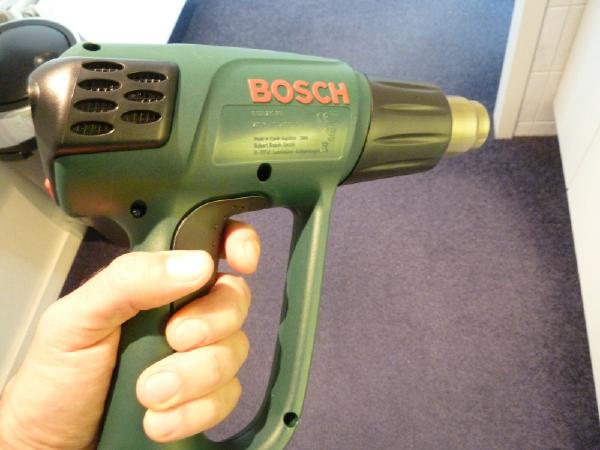 [20110618092852.jpg 20110618094302.jpg 20110618095154.jpg 20110618095200.jpg 20110619093701.jpg 20110619100016.jpg meter.jpg]
[20110618092852.jpg 20110618094302.jpg 20110618095154.jpg 20110618095200.jpg 20110619093701.jpg 20110619100016.jpg meter.jpg]
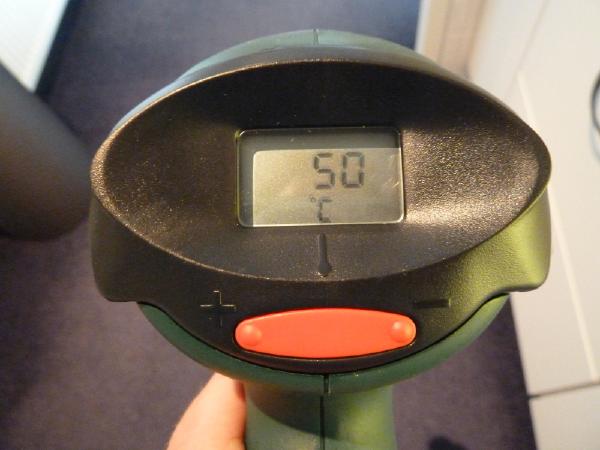 For this test I used the wire thermocouples and put them in the melting ice. Before heating up the housing, these are the readings: Channel 1: 0.9 °C
Channel 2: 1.0 °C
Reference: 2.9 °C Then I heated up the housing of the meter, but not the one of the reference meter. Channel 1: -3.1 °C
Channel 2: -2.5 °C
Reference: 3.2 °C Then I also heated up the reference meter. Best to ignore the measurements of the other meter as it was cooling down again to room temperature. Channel 1: -1.3 °C
Channel 2: -0.7 °C
Reference: 1.0 °C The last test is to determine any crosstalk between the channels of the meter. For this test I used boiling water and a glass with water at room temperature. [20110618092852.jpg 20110618094302.jpg 20110618095154.jpg 20110618095200.jpg 20110619093701.jpg 20110619100016.jpg meter.jpg]
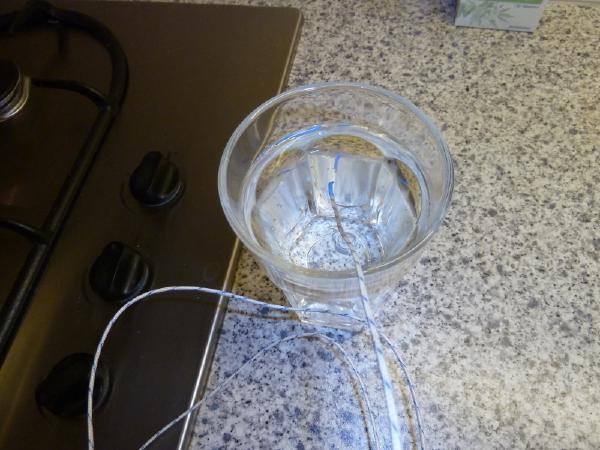 Using the wire thermocouples again, I first started out with both thermocouples in the boiling water. Channel 1: 98.3 °C
Channel 2: 98.7 °C Second measurement was with both sensors in the glass of water. Channel 1: 18.7 °C
Channel 2: 19.3 °C With the sensor on channel 1 moved over to the glass of water. Channel 1: 18.6 °C
Channel 2: 98.7 °C And the reverse, sensor on channel 1 back in boiling water and the sensor on channel 2 to the glass. Channel 1: 98.3 °C
Channel 2: 19.1 °C Then I repeated the test with a larger temperature difference, an open flame and the same glass of water at room temperature. The pen thermocouples were used because of the high temperature of the open flame. Both sensors in the glass of water. Channel 1: 20.9 °C
Channel 2: 20.4 °C Both sensors in the open flame (remember, this test is highly sensitive to the position of the probe in the flame). Channel 1: 936.9 °C
Channel 2: 950.4 °C The channel 1 probe in the glass of water, channel 2 in the open flame. Channel 1: 20.6 °C
Channel 2: 969.2 °C The channel 2 probe in the glass of water, channel 1 in the open flame. Channel 1: 966.4 °C
Channel 2: 21.3 °C So, based on these measurements, I think we can draw the following conclusions: - Sensors from the same type don’t seem to affect the measurements on a channel.
- The pen type sensors dampen the measurement but are more resistant to heat.
- When measuring temperatures around 100°C, channel 1 always seems to indicate a lower temperature then channel 2.
- When measuring temperatures around 0°C, the differences between the channels seems to become smaller.
- The meter seems to compensate for the temperature at the cold junction, but temperature there does affect measurement.
- The temperature compensation at the cold junction does not seem to affect the error between the channels.
- There seems to be no crosstalk between the channels.
- The sensors seem to give similar readings at high temperature, but it is difficult to compare because of the temperature change in a flame.
All in all it seems the meter can be used for doing temperature measurements, although the temperature at the housing needs to be taken into account when doing absolute temperature measurements. The meter seems to be pretty useful when doing differential temperature measurements. |